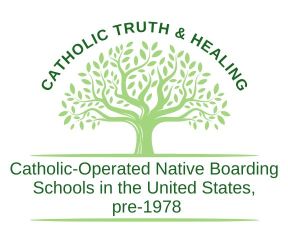St. Benedict Indian School (renamed Martin Kenel Agricultural School)
Details:
Dates of Operation: 1879–1919 (see notes)
Current Diocese: Rapid City
Previous Dioceses Involved:
Vicariate Apostolic of Dakota, 1879–1889
Sioux Falls, 1889–1902
Lead, 1902–1906
Religious Orders who worked at the Parish / School:
Order of St. Benedict (Saint Meinrad Abbey, St. Meinrad, IN), 1879–1884*
Order of St. Benedict (Conception Abbey, Conception, MO), 1884–1906*
Sisters of St. Benedict (Ferdinand, IN), 1878–1882
Benedictine Sisters of Sacred Heart Monastery (Yankton, SD), 1882–1906*
On a Reservation: Standing Rock Reservation
On the Department of the Interior List: Yes
Tribal Nations Impacted (as listed in historical documents):
Blackfeet; Unkpapa; Yanktonai-Dakota
Notes: In 1879, Abbot Martin Marty, stationed at Fort Yates, applied to the federal government for a tract of land to open an agricultural school for boys. Initially, the school only served boys over the age of 12, but eventually, younger boys and girls attended (girls were taught housework). In 1883, Marty (now the vicar apostolic of the Dakota Territory) transferred the school to government control. The following year the Benedictines from Saint Meinrad withdrew and turned over administration of the school to the Benedictines from Conception, MO. Rev. Martin Kenel was appointed as a school administrator, a post he held until he retired in 1906. At his retirement, the government renamed the school in his honor, and both Benedictine communities withdrew from the school. The school continued to operate with lay teachers until it closed in 1919.
